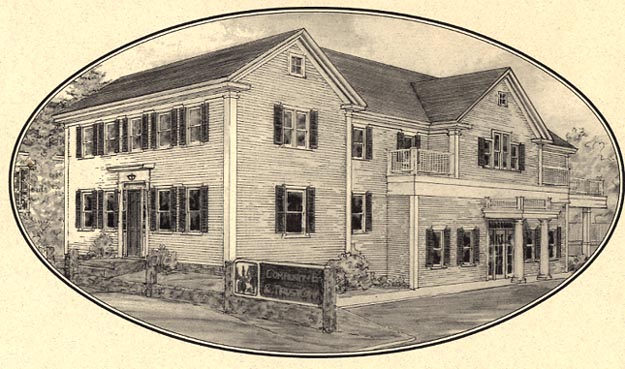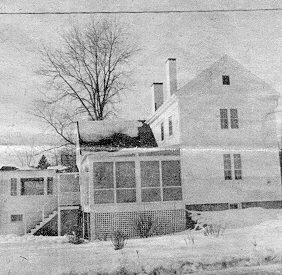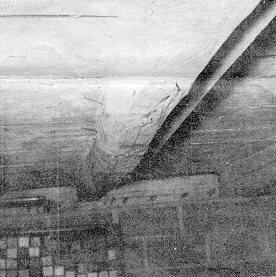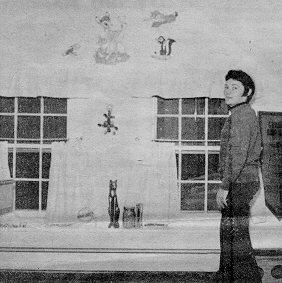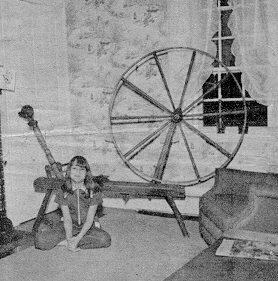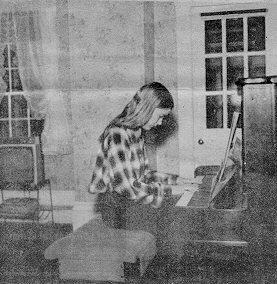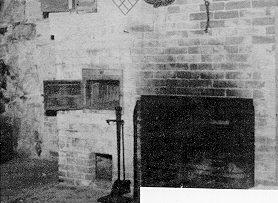Hampton News-Review, Wednesday, December 30, 1970
Published by The Woodbury Press, Inc.
Volume 11, No. 33
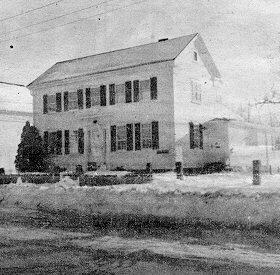
one of Hampton’s ten oldest homes.
[Additional photos at end of article.]
A few weeks ago the News-Review published a story about the old Toppan House on Lafayette Road, which is currently up for sale. A Hampton landmark for 160 years, the Toppan residence when sold, will leave the families ownership for the first time since it was built.
Also currently up for sale in Hampton is the Winthrop Sanborn House, one of the town’s ten oldest homes according to the historical society, a fact unknown by the present owners until a few months ago.
Mr. and Mrs. Roland Cate purchased the Sanborn House from John Fen a little over a year ago and at that time it was believed to have been built in 1850. Mrs. Cate, a member of the Hampton Historical Society, after some research established the actual construction date at 1725.
According to Mrs. Cate the Winthrop Sanborn House and lot was part of “The Ring”, or the original settlement block made up of the area between Winnacunnet Road, “the road to Boston” (Lafayette Road) and Park Avenue. Her first clue as to the home’s actual age was spotting wooden pins in the heavy cellar beams.
Roland Cate pointed out these beams which are set just sixteen inches apart versus the usual three feet. The practice of not wasting good wood is evident in the Sanborn house cellar. Many of the beams follow the natural wavy growth pattern of a tree trunk indicating they were just trimmed, peeled and set in place. Many are 7-9 inches thick.
Many of the supporting beams in the house have strange holes cut at different angles indicating they may have been salvaged from the fire that destroyed the barn and carriage house annex and almost damaged the house on July 30, 1875, when it was owned by Cotton Brown, but that’s getting ahead of the story.
The house is believed to have had another owner between Winthrop Sanborn (1717-1796) and when it became the homestead of Josiah Dearborn (1783-1866). Dearborn was a blacksmith who built the Union House, later known as the Whittier Hotel on Winnacunnet Road which burned in 1916 and was never rebuilt.
Dearborn had his shop adjacent to the Union House and must have taken some work home with him because Mrs. Cate has found tools, horseshoes and nails while digging in the back yard.
Brown (1802-1891) was the next owner followed by Thomas Philbrook (he owned the property where Centre School now rests). Philbrook willed the home to his daughter Anne W. Grenier. The house remained in the Grenier family until John Fen bought it, and he sold it to the Cate’s.
Mrs. Cate has made a hobby of digging up evidence to trace the history of the home. From the elaborate fireplace system in the cellar she figures most all the cooking was done then by servants. Digging up the back yard she has found baskets full of bottles. One crooked model completely without seams was obviously hand-blown, before 1800.
This reporter, who has not been in very many houses 200 years old, found the structure to be unusually solid. One expects drafts, creaky or at least uneven floors in houses built that long ago. As Roland Cate said, “you could walk an elephant across a floor of the structure.”
All the floors are wide pine board, many of them original, having been sub planted from the attic. Ceilings are high, woodwork is heavy with hand carved strips running along the top.
Much of the window glass is original marked with little imperfections and Mrs. Cate was at a loss to explain why some of the panes had cracked since they bought the house. Some sort of pressure has caused the panes to develop slices diagonally.
The right front room is the parlor and to the left is the “cold drink room” so named because the Fens offered the Cates a cold refresher there while negotiating the sale. Used mostly for recreation, the room contains a spinning wheel (all hand carved) brought from Canada by one of Mr. Cate’s ancestors; a Steinway Piano built in 1878 and for contrast — a portable television set.
The three rooms upstairs are all large except for the back bedroom which looks like it must have been servants quarters.
Mrs. Cate did some exploring in the house recently and found she could crawl from a closet in the back room to the other rooms via a small passageway between the floors.
The Cates are certain that Carriage House and Barn were built onto the house from checking old photographs. The stone foundation still runs from the house out toward the small barn located on the corner of the lot. At the other corner is a road that leads to Tuck Field.
In her research Mrs. Cates has run across all kinds of incidents which happened near the famous “Ring” settlement where settlers were doled patches of land. The riot of 1808 caused a religious group to move their outdoor meeting from Tuck Field to Lane’s Corner where Lane [Memorial] Library rests after they were besieged by a gang of toughs.
In 1870 John Towle willed public money to establish a public watering place near the Sanborn Home. Familiar old Hampton names keep popping up: Josiah Dearborn married Nancy Leavitt; there is evidence that Joseph Dow (Hampton History writer) and Cotton Brown were good friends; there’s the story of Josiah offering lodging to Dinah Budoo, a name that figured prominently in The Amos Fortune Story written by Elizabeth Yates.
Longevity was an advantage enjoyed by Sanborn house residents: Dearborn, Brown, Philbrook and Sanborn lived well in to their eighties when the average life expectancy was 33 years.
Asked why they were selling, the Cate’s explained that they owned another house in Newfields even older than the one they now occupy which has an added advantage of a stream running by. Mrs. Cates said, “I could also get started on some new research.”
Additional photos of Winthrop Sanborn House
Now Community Bank & Trust Company
117 Winnacunnet Road, Hampton, NH -03842
